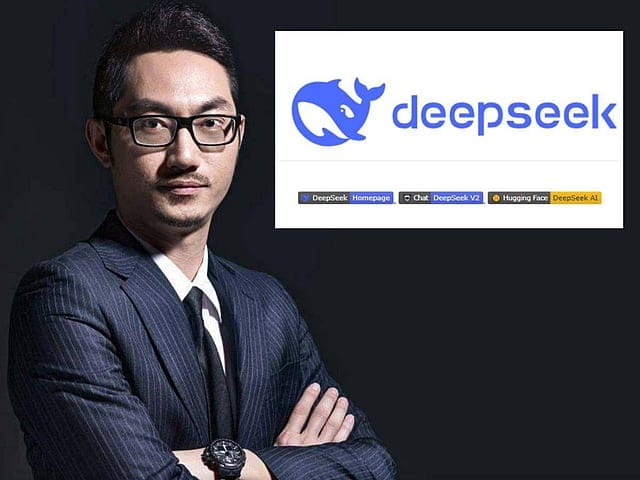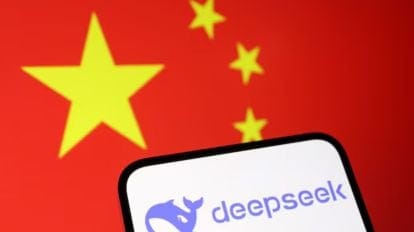How Small Chinese AI Startup DeepSeek shock the Silicon Valley?
What’s happening?
Almost two years back when OpenAI’s ChatGPT burst on the scene, many thought China was caught on the back foot when it comes to AI.
First, Microsoft and OpenAI and then the likes of Google, Meta, Amazon unshered in the age of artificial intelligence.
Chinese players like Alibaba, Baidu started investing billions of dollars but seemed like playing catch up.
Not anymore, though a new large language model originating from China has become the talk of tech town.

What is DeepSeek R1?
DeepSeek R1, a state-of-the-art reasoning model developed by the Chinese AI startup DeepSeek, was launched earlier this month.
It has gained significant attention for its exceptional performance and competitive pricing.
R1 aims to augment reasoning and analytical capabilities positioning it as a formidable contender to other prominent AI Models such as OpenAI’s o1 and ChatGPT.
It is an advanced language model, is constructed employing a hybrid architecture, similar to predecessor, V3.
Yet, it is not the first model from the Chinese startup but is better in almost every aspect.
It incorporates large-scale- reinforcement learning(RL) and chain of thought reasoning to enhance the precision of its responses.
The model comprises of two versions: DeepSeek-R1 and DeepSeek-R1-Zero.
Notably, the latter undergoes unsupervised fine-tuning, demonstrating remarkable reasoning ability.
Origins of DeepSeek

Although R1 has generated significantly attention, AI startup itself remains a lesser-known entity.
Headquartered in Hangzhou, China, the company was established in July 2023 by Liang Wenfeng, a Zhejiang University graduate specialising in Information and Electronic Engineering.
Similar to OpenAI’s Sam Altman, Liang’s goal is to develop Artificial General Intelligence(AGI)- an advanced AI capable of performing a wide range of tasks or at beyond human-level proficiency.
Why is DeepSeek gaining popularity?
One of the notable features of Chinese based AI startup is its cost-effectiveness.
In contrast to OpenAI’s o1, which charges $15 per million input tokens and $60 per million output tokens, the Asian startup offers a substantially lower price at $0.55 per million input tokens and $2.19 per million output tokens.
This makes it an appealing option for developers, researchers and organizations seeking cost-effective AI solutions.
what’s even more interesting is that, according to DeepSeek, it took the startup about two months to develop the model.
While OpenAI, Google. Microsoft have been pumping billions of dollars in development of AI models, this startup invested just $6 million to create its latest model.
In terms of performance, DeepSeek R1 has demonstrated comparable results to OpenAI’s o1 across various benchmarks, including mathematics, coding and reasoning tasks.
Notably, it even outperforms OpenAI’s o1 in certain areas, such as coding tasks, where it achieves a remarkable 97% success rate.
Furthermore, DeepSeek has unveiled six compact versions of its R1 model, designed to run effectively on laptops.
The company claims that one of these smaller models surpasses OpenAI’s o1 mini in specific benchmarks.
“DeepSeek has effectively replicated o1-mini and made it open source”, said Perplexity CEO Aravind Srinivas in a post on X.
Satya Nadella, CEO, Microsoft remarked- “I think we should take the development out of China very, very seriously.”
Is it an Open-Source Model?

The startup has released it as “open-weight”, meaning the researchers can study and build on the algorithm.
Published under MIT licence, the model can be freely reused but it is not considered fully open-source, because its training data has not been made available.
Chinese companies are increasingly adopting open-source practices alongside a focus on efficiency.
For an example, Alibaba in recent months has introduced over 100 open-source AI models, supporting 29 languages and addressing diverse applications such as coding and mathematicians, according to the MIT Technology Review report.
A report published by the China Academy of Information and Communication Technology, a state-affiliated reasearch institute highlights the global scale of AI development.
As of last year, there were 1328 large language models worldwide, with China accounting for 36% of them.
This solidifies China’s position as second-largest player in AI development, trailing only the United States.
While it is still behind the US in AI Development, the likes of DeepSeek could give China the edge and have US worried about what might come next.
With its rapid development, competitive pricing and open-source initiatives, DeepSeek is set to make its presence felt in the global AI landscape and it also signals China’s growing influence in the field.
For more interesting articles regarding tech world, visit our website Teclearnings
